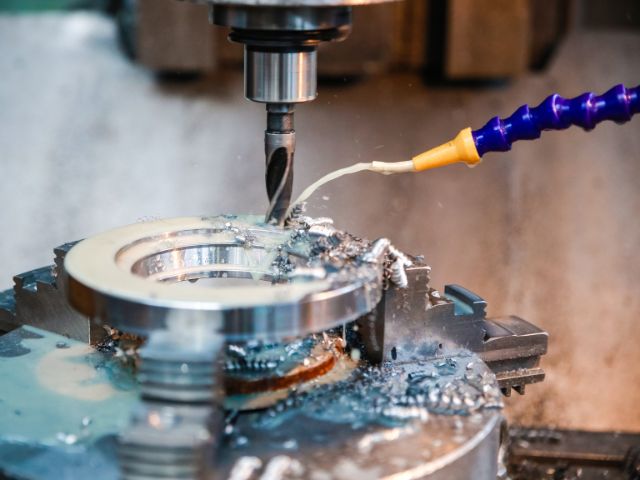
 education
education 
Controlling how much heat your drill generates when cutting metal isn’t straightforward, but it is important. Excess heat can damage your drill bits, lower the quality of the holes drilled, or even damage your workpiece. Work more easily with these three tips for minimizing heat when drilling metal.
Machining highly abrasive or hard materials like treated stainless steel, titanium, and cast iron generates a lot of heat. Different drill bits have different heat resistance levels.
Two important advantages of using carbide drill bits are that carbide has high heat resistance and can cut extremely hard ferrous material. Carbide can cut brass, iron, and hardened steel, and it can leave a burr-free finished hole.
Cutting fluids or lubricants keep the drill bit cool and reduce friction, making drilling easier and smoother. When choosing a lubricant, consider the metal you’re working on. Lower-viscosity oil is generally better for aluminum and softer metals, while steel requires higher-viscosity oils.
These are the three classes of cutting fluids:
Reapply the lubricant as needed to optimize heat reduction. Follow the manufacturer’s instructions for lubrication, but remember that the frequency of drill bit use, the tool’s workload, and the workspace environment can affect how often you need to reapply the lubricant.
The final tip for minimizing heat when cutting metal is to drill slowly and lower the feed rate. Speed is the number of times the outside of the bit rotates within a set time interval, while feed is the rate at which the tool moves into the material.
This tip doesn’t mean that you should always drill slowly but that you should drill at the lowest speed the metal will allow. Refer to a drill speed chart to know the correct speed and feed rate required for your material. Also note that the deeper the drill depth, the lower your feed and speed rates should be.
Using heat-resistant drill bits, applying a cutting fluid, and reducing the drill’s speed and feed rate will prevent overheating. Protect your workpiece, create smoother holes, and extend the service lifespan of your tools with these tips.
24World Media does not take any responsibility of the information you see on this page. The content this page contains is from independent third-party content provider. If you have any concerns regarding the content, please free to write us here: contact@24worldmedia.com